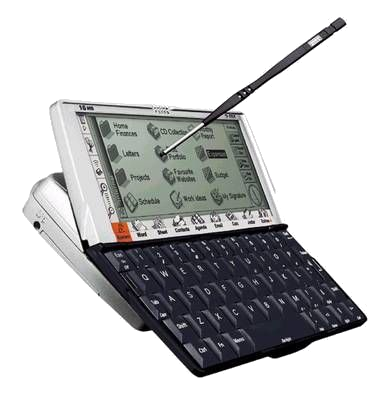Implementing A Multi-Hat PDA
Matthew Johnson and Frank Stajano
University of Cambridge Computer Laboratory
The Problem

- The PDA is obviously designed as a single-user machine
- Some functions of a PDA we want to be passworded:
- Diary / Journal
- Some functions do not not need a password:
- Calculator
- Games
- Just using a calculator requires a password.
- Still cannot lend the calculator without giving access to email.
The many hats idea
- PDA may be a single-user machine, but it doesn't have a single policy.
- User can assume several roles with different privileges and credentials.
- Roles may be changed between without interrupting sessions in progress.
- One role can be accessed with no credentials.
Multi-hat security rules
- Hats. The machine supports a finite number of hats which have credentials. One of these is the null hat, which has no credentials.
- Sessions. The machine supports simultaneous sessions, each belonging to a hat, each active or locked.
- Session Unicity. For each hat there is at most one session.
- Hat Selection. There is a convenient way to select any hat. This activates or, if necessary, creates the session for that hat.
- Switching Sessions. To activate a session you must present the credentials of its hat.
The Null Hat
- Requires no credential, and can always be easily accessed.
- Can access stateless programs:
- Calculator
- Calendar
- World time
- Cannot access scarce or expensive resources:
- Internet/network access
- Default session if no valid credentials are available.
Restricted Hats
- Security policy allows any number of restricted hats.
- Can access selected extra resources to the null hat.
- Can use stateful applications.
- Require configurable credentials to access.
Changing Session
- Explicitly select a particular hat
- Shortcut to get to the null hat
- Automatically switch on events
- Power on
- Suspend/sleep
- Authentication token presence/absence
- Lid closing
Authentication delegation

- Authentication may be delegated to a proximity token.
- The token will report the distance from the token to the PDA.
- Presence of the token may be either required or sufficient to access a hat.
- Current prototype based on Bluetooth.
- Possible Middle-Person attacks.
Demo

Related Work
- Investigated similar features in several existing systems
- Windows XP—Fast User Switching
- Xen—Virtual Machines
- Linux
- KDE—Integrated GUI Session management
- SELinux—Role-based access control
The Prototype

- Using an IA-32 laptop based upon KDE on SELinux.
- Multiple roles as Linux users.
- Sessions on separate X servers using KDM.
- KDE remote session management and locking.
- Custom event-based mechanism for switching.
- Bluetooth locality system.
- ACPI events trigger events.
Prototype Hats
- Two restricted hats:
- Less secure hat has network access and some stateful applications.
- More secure hat has access to sensitive data as well.
- Bluetooth proximity token for the less secure hat.
- More secure hat always requires explicit credentials (password).
- Null hat with stateless applications.
Further Work: Authentication methods


- Don't want to use passwords.
- Hardware tokens:
- iButton.
- Smart Cards.
- Biometrics:
- fingerprint reader.
- Can reduce user interaction in authentication step.
- Issues with sessions with identical credentials.
Furthur Work: Interface
- X is not the common Linux PDA interface
- Multiple X Sessions are wasteful
- Most solutions for multiple programs in single X servers don't separate the programs
- Generic proxies, such as VNC, have overhead and cater for the lowest denominator